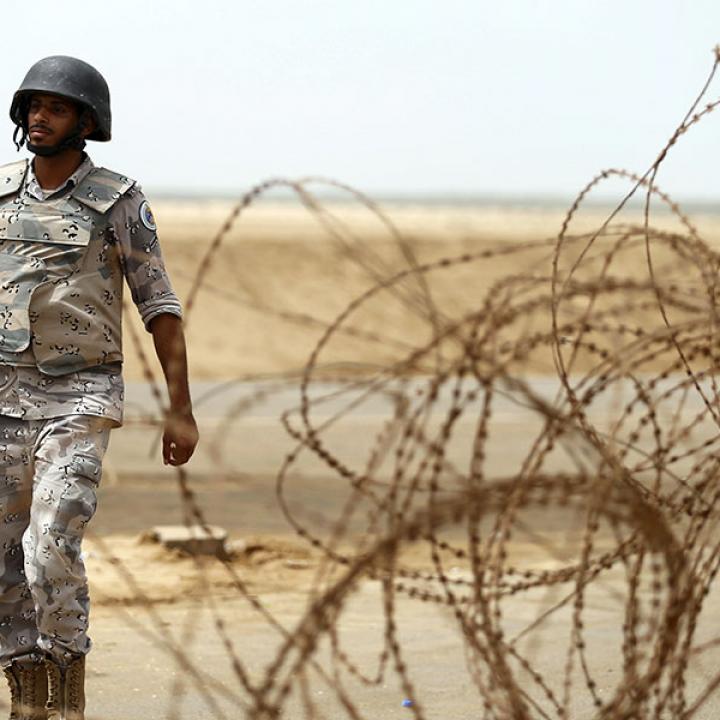
- Policy Analysis
- Policy Alert
Saudi Security Forces Kill Shia Militants Near Major Oil Facilities

Coming the same week as Secretary Pompeo’s Middle East tour, the incident is a powerful example of the regional threat posed by Iran.
Other than a photograph of a badly damaged building, details have been slow to emerge about the January 7 clash in the Qatif area of Saudi Arabia’s Eastern Province. Authorities waited two days to reveal that six militants were killed and another captured, along with five security personnel injured. That makes it the worst such incident since mid-2017, when one Saudi security officer was killed and several others injured during an attack in the same area.
The location of the shootout is arguably ground zero for Riyadh’s tensions with both Iran and its own Saudi Shia population. The area is home to the kingdom’s main oil fields and oil export infrastructure. It is also close to the island state of Bahrain, which is connected to the Saudi mainland by a causeway and hosts the headquarters of the U.S. Fifth Fleet. Crucially, the majority of citizens in the Eastern Province and Bahrain are co-religionists of Iran, located just 120 miles away across the Persian Gulf. The men involved in this week’s clash were Shia as well—a fact confirmed by their published names but otherwise not mentioned in Arab News or the Saudi Gazette, the kingdom’s English-language newspapers. In a further indication of the issue’s sensitivity, the former paper correctly labeled them “militants,” but the latter chose to use “terrorists” for unexplained reasons.
Iran was almost certainly the ultimate source of the weapons and ammunition seized after the incident and put on display, which were typical of caches found in Bahrain in recent years (i.e., automatic weapons, bullets, grenades). Militant youths on the island—often socially and politically marginalized at home and drawn to the Islamic Republic’s rhetoric—are known to have received training in Iran or southern Iraq.
According to Saudi reports, the Qatif militants had been targeting security personnel and disrupting local development projects—an apparent reference to the controversial remodeling of central al-Awamiyah, a two-year process that spurred previous clashes as hideouts in that nearby town were bulldozed. On the day before the latest clash, Saudi media headlined pictures and video of the new al-Awamiyah. The precise circumstances of how the fight broke out and how long it lasted are unclear, but a photograph of the building where the militants held out suggests that Saudi forces used a guided missile or tank shells as well as machine gun fire.
Other than forming a talking point in Secretary of State Mike Pompeo’s imminent meetings in Riyadh and Manama, the incident’s consequences are hard to predict. The kingdom’s January 2016 execution of firebrand Shia cleric and Qatif native Nimr al-Nimr led to the sacking of the Saudi embassy in Tehran and the severing of diplomatic relations. Whether Tehran or local Saudi cells will feel compelled to avenge the killing of six militants is unclear.
Simon Henderson is the Baker Fellow and director of the Bernstein Program on Gulf and Energy Policy at The Washington Institute.



